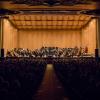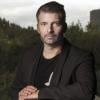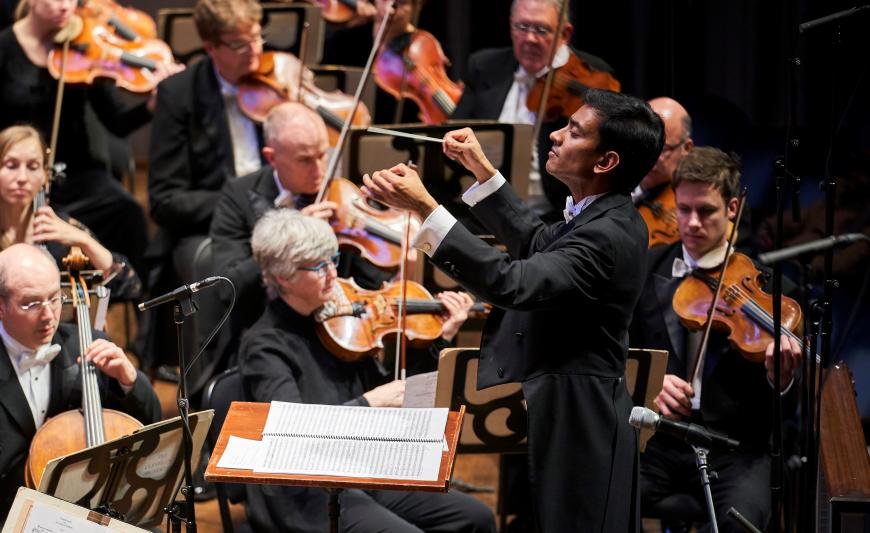
From even an abbreviated glance at conductor Vinay Parameswaran’s biography and recent history, you’d think his musical bucket list must be empty. After all, in the 2022–2023 season alone, Parameswaran makes debuts with the Chicago Symphony, Pasadena Symphony, Louisiana Philharmonic, Charlotte Symphony, Winston-Salem Symphony, and the Oakland Symphony on Feb. 24, when he conducts a program titled “Notes From California.”
Parameswaran hails from the Bay Area. Born in Walnut Creek, he and his family moved to Moraga when he was 10. Launched into piano lessons from age 4, Parameswaran gravitated to percussion and was a member of the San Francisco Symphony Youth Orchestra throughout his middle and high school years. Headed to Brown University with his sights set on law school, his love of music returned and reengineered his career track.
Parameswaran holds a bachelor’s in music and political science from Brown and an artist diploma in conducting from the Curtis Institute of Music. In the past few years, he has served as associate conductor for the Nashville Symphony (a three-year term) and as associate conductor for The Cleveland Orchestra (a five-year term that began as assistant conductor), along with making debut appearances with the Pittsburgh Symphony, Detroit Symphony, National Symphony Orchestra, Louisville Orchestra, and Milwaukee Symphony, among others.
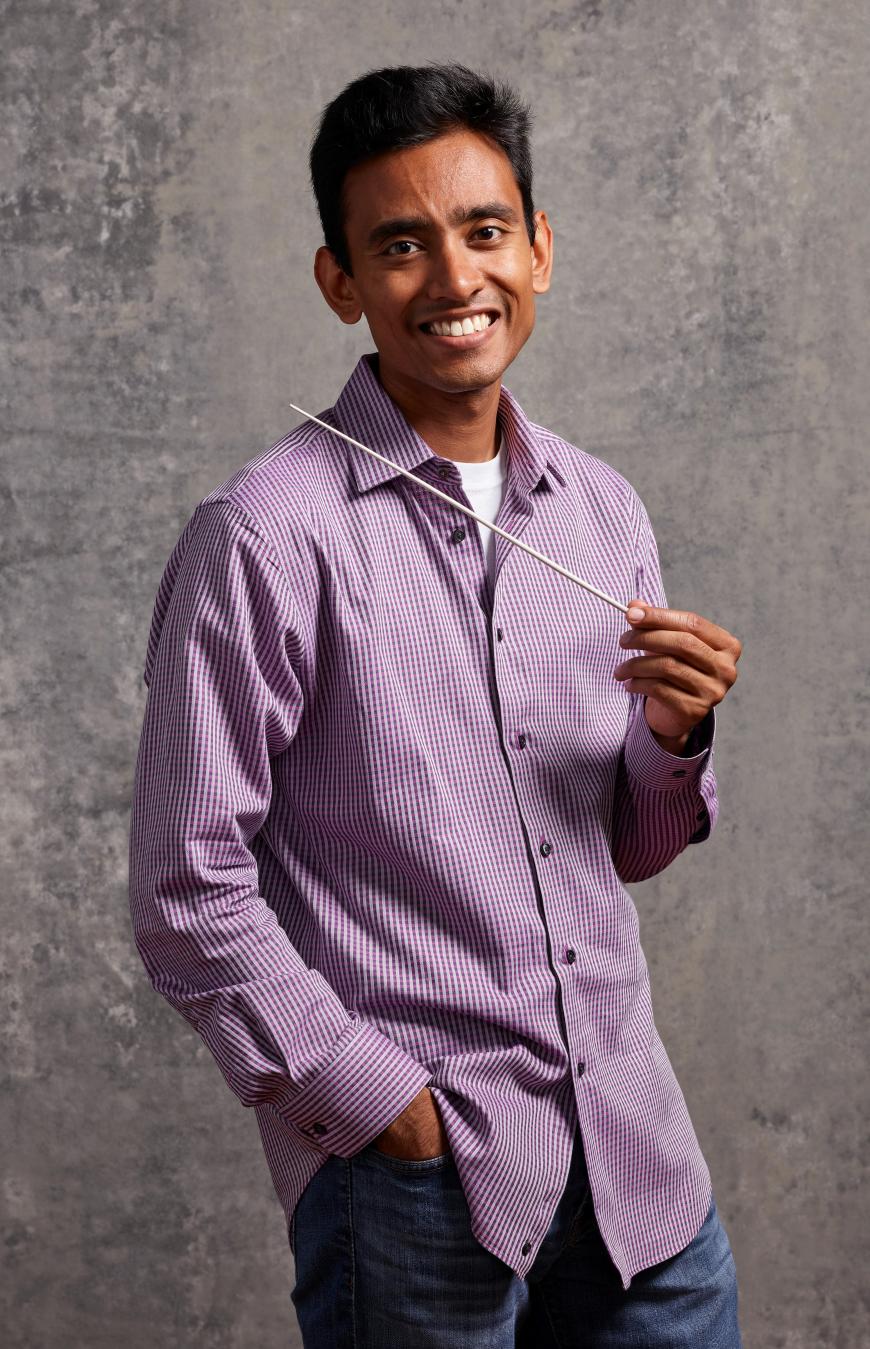
Taking command not only of symphonic repertoire but also opera, Parameswaran has conducted an admirable, eclectic musical parade, but he’s young and there’s more to do. Asked what’s on his wish list, Parameswaran said he would send a list, which arrived the next day: Alban Berg’s Wozzeck, Olivier Messiaen’s Turangalîla-Symphonie, all the Mahler symphonies, Verdi’s Otello, Dmitri Shostakovich’s Symphony No. 8, Sergei Prokofiev’s Symphony No. 6, Beethoven’s Symphony No. 9, and Richard Strauss’s Der Rosenkavalier.
Parameswaran and his wife, Sara Huebner, live in Madison, Wis., where she is a veterinarian and completing a small animal internal medicine residency at the University of Wisconsin–Madison. He spoke at length about formative influences, the program he will conduct in Oakland, and the philosophies and practices he brings to the podium.
What defined the music you heard and the culture around art established by your parents in your childhood home?
I do not come from a musical family. My parents are not musicians, but they’ve always been music lovers, especially my dad. My older sister started piano lessons when she was young, and my parents soon started me on piano also. My parents are immigrants from Southern India, so a lot of the music I heard was classical Indian music and film industry Hindi songs. They come from Kerala, the most southwestern state in India, so it was songs sung in Malayalam, their native language. My dad has eclectic taste and also loved Western music. I didn’t grow up listening to Beethoven, but I was playing piano, so I heard all kinds of music. I was a ’90s kid, so I listened to alternative music, hip-hop, and pop music coming out at the time.
The youth orchestra changed my life. Lots of people who do this kind of thing for a living will say that, but in terms of my love of classical music, it came from those years in San Francisco. The level of artistry at the [SF Symphony] Youth Orchestra is so high. One particular memory? The thing that comes to mind: I was 11 years old, playing as a percussionist in Davies Hall. We were playing Shostakovich’s 10th [Symphony]. The second movement of that symphony is only about four minutes long, but it’s whirlwind, nightmare, terror music related to Stalin. To be inside the orchestra while that is happening all around me — there’s a big snare drum part that really drives the terror. I had never before been in the middle of that music, and I was completely in awe of what an orchestra can do.
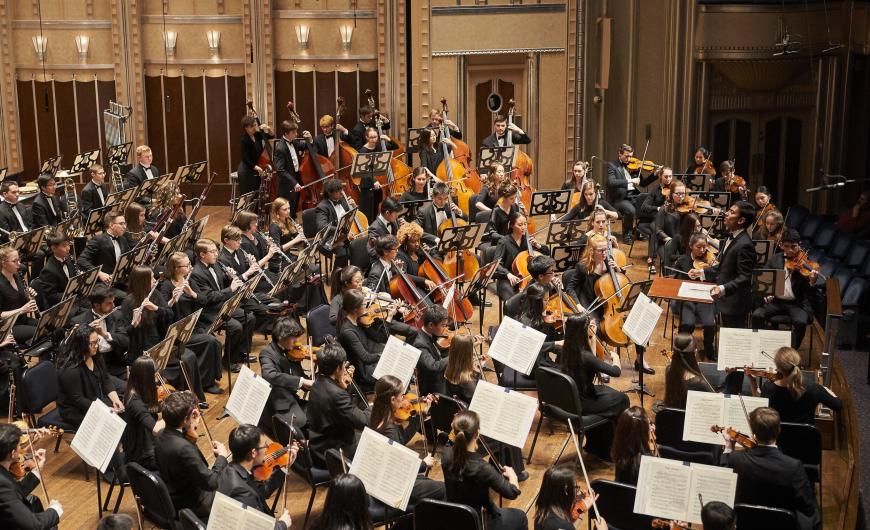
Let’s dive in and talk about the program you will be conducting, “Notes From California,” with the Oakland Symphony. How did you come across Gabriella Smith’s music?
Gabriella is a good friend of mine. I went to school with her, studying at Curtis. I’ve known her for almost 15 years now. I’ve always been drawn to her music because she’s one of the most talented and unique voices in our industry. You’ll notice in Tumblebird Contrails and a lot of her music she asks musicians to play in unorthodox ways. In the strings, they’re sometimes tapping the strings or playing behind the bridge. She might have the wind or brass blow into their instruments without making notes. She always knows these instruments so well and how to get the exact sound she wants. For someone so young, that’s incredible.
When she was 18 or 19 and at Curtis, I remember thinking her music was unusual. A lot of composers have been inspired by nature, and she’s certainly an environmentalist at her core. That’s also compelling. She’s a citizen, someone people in Northern California can identify with easily. With this piece, she’s painting pictures of familiar places, Point Reyes and the Pacific Coast. Even for people who aren’t familiar with Northern California or an orchestra, it’s relatable to things they experience in their own lives when they are outside or in nature.
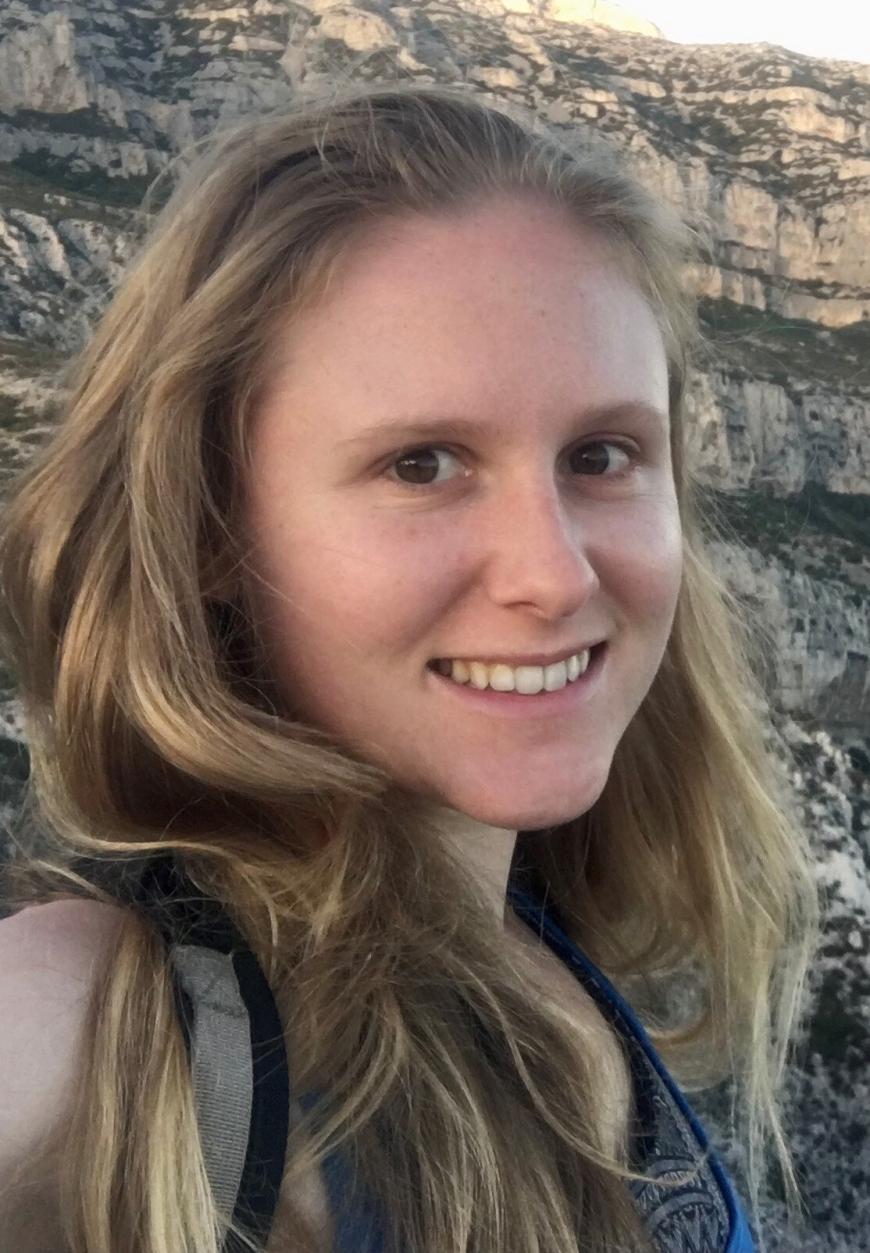
What I love about this piece is that through music it transports you to a place. My wife and I had one of our first dates at Point Reyes, so there’s that. I know what it’s like to be in this place, with these sounds, on the ocean, hearing the birdcalls or feeling the sand between my toes. She [Smith] captures even sand in your toes through sound. I’ve talked to people not from the West Coast or who aren’t avid concertgoers, and they are enthralled. Also, her use of rhythm and groove is contagious. Tumblebird Contrails begins with a rhythm section in the orchestra and then drones come in. A lot of the sounds she gets, like birdcalls or seagulls, are universal. The audience eats it up because no matter where you are, you’ve experienced these things.
What attracted you to Robin Holloway’s arrangement of Claude Debussy’s En blanc et noir?
This piece was personal to Debussy. It was later in his life, he had been diagnosed with cancer, it’s in the middle of wartime. It’s a man being reflective, taking in the world. The second movement is dedicated to a fallen soldier, and there’s a quote of a Lutheran hymn. If you think about his correspondence during this time, he was obsessed with the war. For the time we’re living in, it’s relevant, with wars going on. The last movement is dedicated to [Igor] Stravinsky. I thought of Petrushka the first time listening to it. Thinking of the second tableau’s noodle-y phrases in the winds, I find a connection there.
One theme across the program — these four works and four composers — their music is reflective of things going on in their worlds. It’s not music in a vacuum. All four pieces deal with major events, like the environment, war, and with [Reena] Esmail, the pandemic.
Tell us about her piece.
What she has chosen as the text is something we can all relate to [Chickasaw writer Linda Hogan’s poem “The History of Red”]. It’s inspired by [Samuel] Barber’s Knoxville: Summer of 1915, which is one of her [Esmail’s] and my favorite works. It’s the same orchestration as Knoxville, except the percussion. What makes the Barber touching is it’s from the perspective of a child observing the family and sunsets, and it’s poignant. The Esmail work is definitely the voice of an adult woman who’s thinking about her life and the will to live. That’s what the poetry is about. If we think about the pandemic and the 2020 election and all the tumult, it’s incredibly relevant.
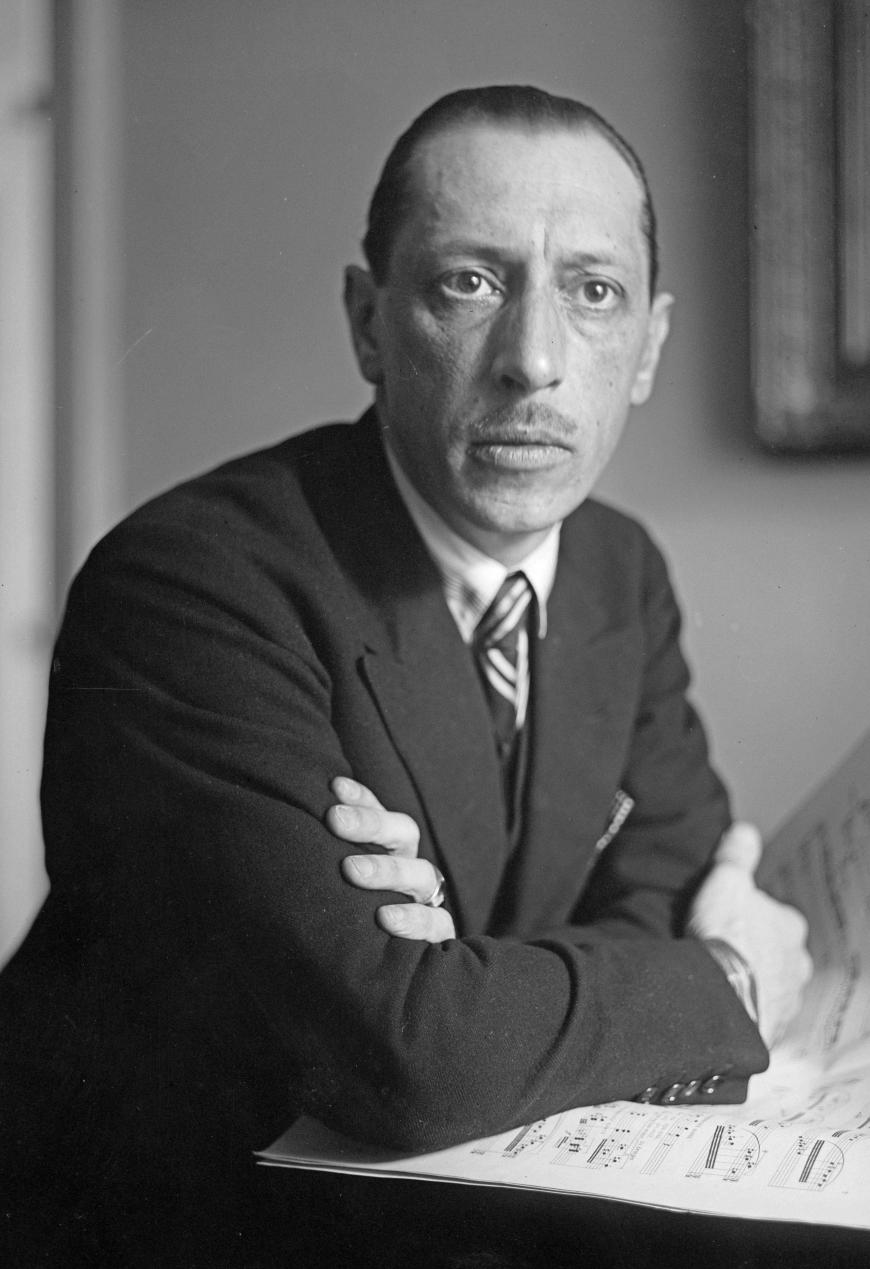
And then you end with Stravinsky’s Symphony in Three Movements.
I’ve always thought he was the most talented 20th-century composer. You look at the early ballets we love, and he also had this neoclassical string in him, [and] he dabbled in 12-tone with Agon. He was just so gifted. The first time I played the Stravinsky was as a timpanist, so I experienced it from the back of the orchestra. It’s another piece grappling with war. The opening is defiant, has chaos with dancing, bouncing rhythms and big intervals striving and driving for something. In the third movement, he wrote about soldiers marching. There’s that visceral nature. I was always drawn to [this work] because it has a great timpani part. You’re not playing all the time, but when the timpani does play, it’s prominent. It’s like what I call “a timpanist’s deliverance.”
Are there general philosophies you apply when approaching a score, regardless of how familiar or new the music might be?
I try to have the same approach. I do my score study at the piano; I play everything. The tangible quality, it helps me get a sense of the music and all the parts. When studying, you’re trying to digest these big works. It takes months or years. The first thing is to figure out the structure. I get into the composer’s head. I try to figure out how this great composer put this piece together. I think about sonata form for Mozart or Beethoven. What is the material, and how is it developed? I start macro, the architecture of it. Then little by little, the micro view: details of dynamics, articulation, use of instruments, the combined voices.
And how do you like to work with an orchestra?
Whenever I’m in front of an orchestra for the first time, there’s a nervous excitement. You never know what’s going to happen. It’s like a blind date. How do they read me? What do they bring to the table? I run a movement or the entire piece to start so the orchestra knows how I communicate. A read-through from start to finish early in the process answers a lot of questions. From there you can get into details. When you have a great orchestra, the fun is you can right away get to deeper things: character, color, how forte is different in Debussy than in Shostakovich. You bring out the finer details in the music.
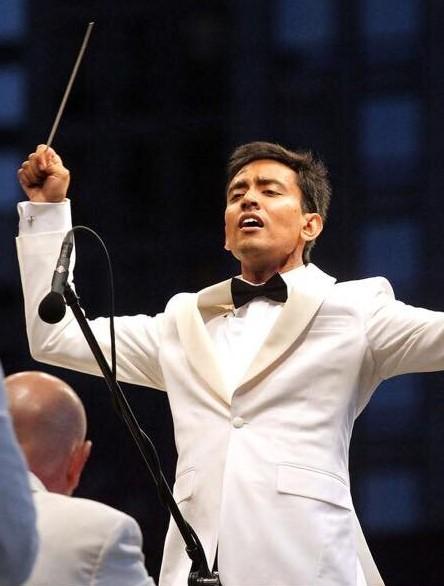
In what ways does your experience as a pianist and percussionist shape your perspectives, beliefs, and practices as a conductor?
I think it’s helpful to have played in the orchestra a lot. My years as a percussionist, you spend a lot of time listening because you don’t play a lot. You may have sections in which you only play one cymbal crash, but it’s a really important cymbal crash. I also watched a lot of conductors, the clarity or the shaping they might need. You also know what it’s like for a musician to follow a conductor.
As a pianist specifically, what’s helpful is having the skills to go through the scores. The repertoire you have as a pianist, especially in chamber music — there’s [the question of] how you play sonatas with other people or in piano quartets. That setting is helpful because I think an orchestra is like a big chamber ensemble. As a percussionist, my sense of pulse is vital. The Stravinsky has a lot of meter changes, and I feel comfortable [with that] as a percussionist.
In what ways has observing Cleveland Orchestra Music Director Franz Welser-Möst and other conductors influenced your own conducting?
In Cleveland specifically, it was amazing just to witness artistry on that level. What I learned from Franz is that he’s an opera conductor at his core. Watching his ease with singers: They always felt comfortable. He knew when they needed to breathe, move forward, or be given time. Conducting pieces four hours long, he understood the architecture, the drama, the shape, and how to get from beginning to climax to the end. He brought the same cleverness to orchestral repertoire, so watching him conduct a Bruckner or Mahler symphony, he knew how to shape them. He would never give anything away too soon. The flow and tension was going, but like, with a Mahler work, if you give it all away too early in the first movement, why listen for another 55 minutes?
Also, what I borrowed from him is the way he talked about sound color. The vocabulary he had; he’d never say loud or soft. He’d say play it more pale or more mysteriously or bombastically. He could communicate character, and he activated the music-making by not saying loud, soft, fast, slow.
From [Music Director] Giancarlo Guerrero in Nashville, who was also a percussionist, I learned the rhythmic grounded-ness one needs on the podium. He excels with new works but also with the responsibilities a conductor has that are not on the podium. He’s a spokesman for the orchestra [the Nashville Symphony]. He’s connecting with the community. He has a natural charisma, and watching that, you learn things you don’t learn in school. He was an innovative programmer and commissioned and recorded a lot of new works. He found great connections between old and new works, so his repertoire was really broad.
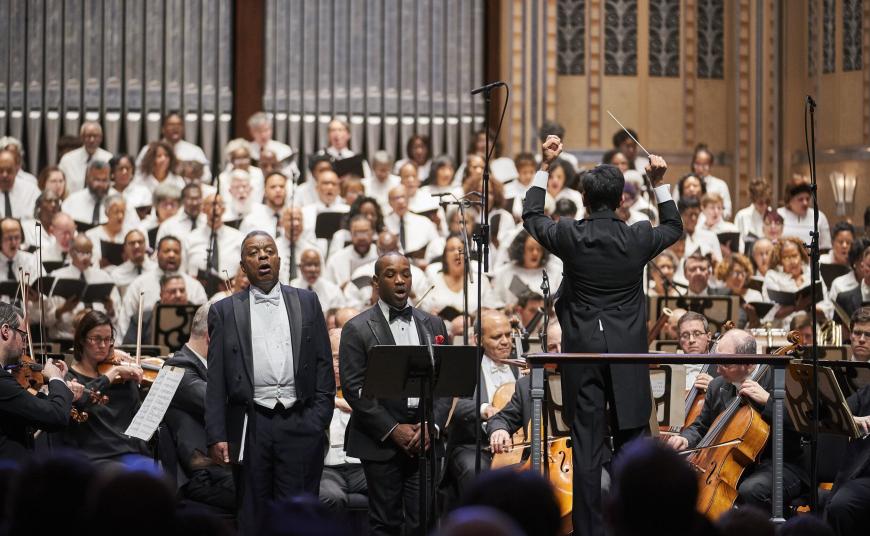
Classical music in the post-pandemic recovery period has had calls for more diversity, equity, and urgency about social justice, climate change, and so many other hot topics. Will the industry be responsive?
I’m optimistic. I see my colleagues, my peers, who are creative citizens of the world through their art form. Gabriela Lena Frank has her academy in Northern California that is for musicians who often are also environmentalists and climate activists. There is more engagement in community and not just programming in a vacuum. Looking to community for work that is relevant, seeing that focus more, it’s healthy for the industry. Young musicians are creative, and they want to see the art form go forward.
Your wife is a veterinarian but also a musician. In what ways might she influence your professional life as a conductor?
I met Sara at Curtis. She was an incredible trumpet player. She knows this music inside and out. She is always pushing me to define depth in the music I’m studying — to be a person of depth and have an honest approach. That’s who she is as a person. She reminds me that music is a very human thing and a lot of music’s values are human values. If you’re a good person, it shows in the music.


